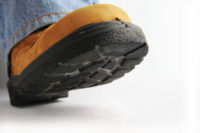Staying a step ahead
Fortunately for the company I work for, Alpha Meat Packing Co., Inc., in South Gate, Cal., we've been prepared for an ergonomics standard for several years.
That's because we commenced a customized ergonomics program in early 1991 after the California State Legislature passed Senate Bill 198. That far-reaching law required every California employer, regardless of industry or size, to have a formal written Injury and Illness Prevention Program (IIP Program) in place by July 1, 1991.
We enrolled in several occupational safety and health workshops to educate ourselves and our workers about the basic principals of effective injury and illness prevention. At one of these safety workshops the importance of developing an ergonomics policy to support and compliment our impending IIP Program was discovered. Not by design, but by sheer serendipity our company developed a customized ergonomics policy in 1991 that meets, and even exceeds, Cal/OSHA's 1997 Ergonomic Standard requirements.
Getting a jump by following guidelines
Federal OSHA's 1990 "Ergonomic Program Management Guideline for Meat Packing Plant" gave our plant direction to meet our industry's particular needs. In 1991, the guidelines became our starting point in developing an IIP Program.Here's how we did it: First, we performed job safety analyses for all departments of production, maintenance, shipping/receiving and sanitation. We also performed worksite analyses of all existing production equipment and all hand held-tools. We wrote detailed bilingual job descriptions for every task. All safety and health hazards of every job were listed. Each job safety analysis was signed and dated by a trained employee.
Then we made some changes: Rubber mats and food grade crates were purchased for the protection and comfort of on-line employees. We began mandatory job rotations of our knife handlers and meat and bone saw operators. Packoff employees who perform repetitive lifting were shown bilingual safety videos concerning proper lifting techniques. Written fill-in tests were used to reinforce the safety videos' messages. Back support belts were made available, but not mandated, at no charge. And we became more vigilant: We examined our past Cal/OSHA 200 log for subtle injury trends, and during monthly supervisors' meetings we investigated injury or near misses that had occurred since our last meeting.
Re-Investing results
And finally, we got results: Alpha Meat Packing cut Cal/OSHA 200 log injuries by more than 78 percent between 1991 and 1996. And our successful safety and health programs have generated large worker's compensation rebates.The cost savings have been reinvested in the company, helping to fund a new construction project. Our plant's entire infrastructure of ceilings and walls are now covered with easy-to-maintain glass boards. Ceilings have been lowered so that both sanitation and maintenance practices are easier, safer and faster. Overhead lighting in the coolers was enhanced. Our newly designed production lines now have their power conveyor switches located at easy-to-reach areas. The cutting and tray areas were also constructed with sound ergonomic heights in mind. All floorings were upgraded with a safer food grade anti-slip aggregate covering, and are sloped at angles that would ensure good water drainage.
The luxury of debating ergonomics is history in California. Lucky for us, we're already in compliance.
Looking for a reprint of this article?
From high-res PDFs to custom plaques, order your copy today!



